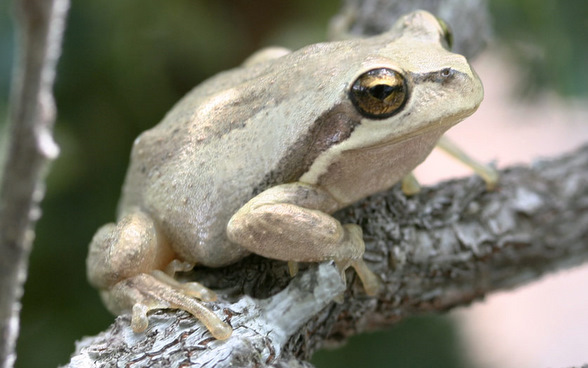Size
2 - 4.5 cm
Behaviour
Call
Males call when hidden among vegetation in water, or at the water’s edge. Less commonly, they can be heard calling far away from water. Their call is a series of rapid, harsh whirring, pulsing notes (“creeeeeee creee creee cree cree cree”) that are repeated between 5 and 15 times, and the first note is usually held the longest.
Listen to the Southern Brown Tree Frog call © Nature Sounds/David Stewart
Diet
Insects, which it can leap to catch in mid-flight!
Movement
Agile climbing and jumping.
Breeding
Males call to attract females throughout the year, but more frequently and intensely after heavy rain. Breeding peaks in late winter/early spring and in autumn. Females lay their eggs in jelly clumps (usually under water, attached to submerged vegetation), in the still waters of streamside ponds, dams, lakes, and flooded roadside ditches and ponds. The tadpoles hatch after four to six days.
Field Guide
Improve your identification skills. Download your Southern Brown Tree Frog field guide here!





